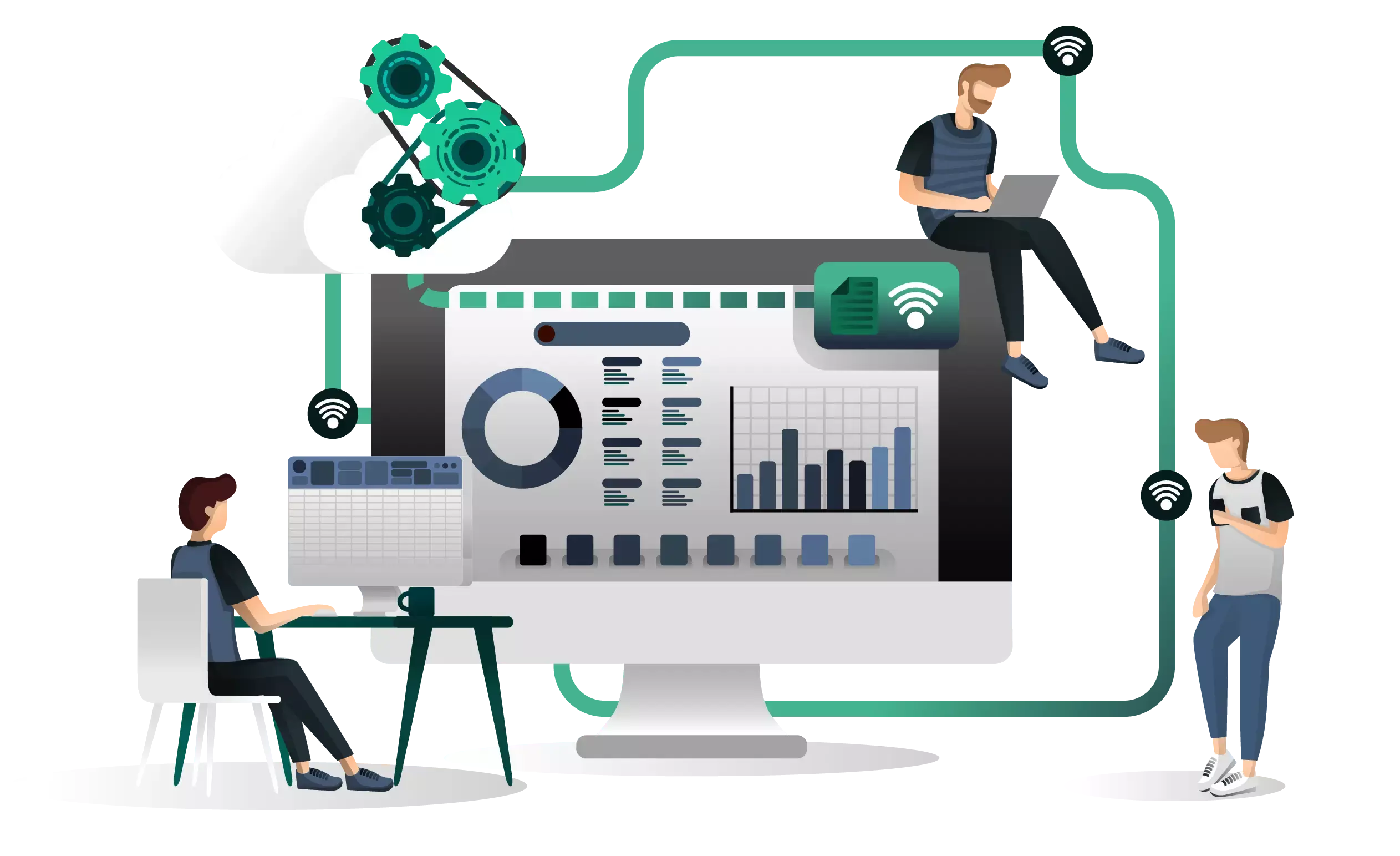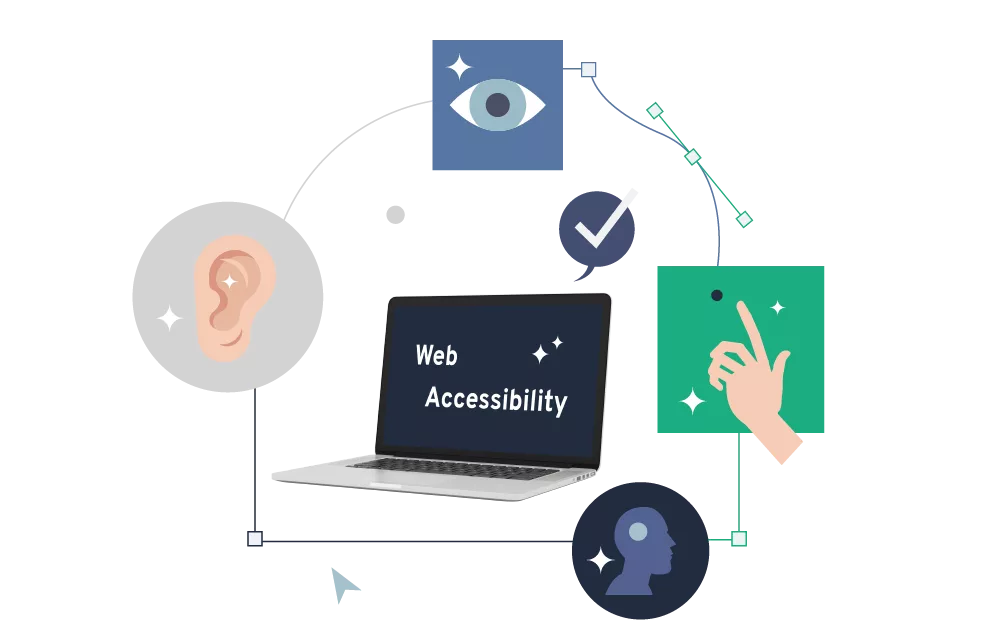7 Tips for the Perfect Website
If we take a look at external corporate communication in western industrialised countries, one thing becomes very clear: even though social media has become an essential tool over the last two decades, a company's website is still very important. In this article, we therefore show you how to make sure that your website stands out.

The to-do list in everyday life is often very long, especially in young companies, and the question of the optimal web presence is often put off for later. However, you should bear in mind that the website is your only "salesperson" working for you around the clock. With a good website, you create visibility, guarantee accessibility and have plenty of space for comprehensive information about your products and services.
If you ask yourself how you should get started, this is the right article for you. Questions often arise such as:
- How much effort should I expect to put into the website?
- Should I create the website by myself or have it professionally designed and programmed?
- What aspects should I pay attention to when creating the website?
We will give some tips on the last question below, but first we would like to answer the first two. How much time and resources you should invest will of course depend on the company and the purpose of the website - a purely informational site might take less time than a site with an integrated online shop. But no matter how far-reaching the online presence is, it should have a consistently professional appearance. The website is the company's business card, so to speak, and in many cases creates a first impression - if this impression is good, then a lot has already been gained. Whether you want to create the site by yourself or seek professional help is also a rather individual question. What skills do you bring to the table in the area of web design and website creation? And how much time would the implementation cost you? If you answer these questions and realize that it makes more sense to invest the time in the actual purpose of the company and thus in your core competence, then it is worth considering outsourcing the creation of the website.
Regardless of whether you want to expand an existing website or are just starting out: We would like to give you a few points that you should definitely bear in mind for your online presence.
1) Individual Web Design #
Regardless of whether you design the site yourself or have it designed by professionals: Show your individuality. Before you simply use the first template that comes along, it's best to think about how you want to be perceived as a company and how your corporate identity can best be communicated.
A website that manages to authentically reflect the personality of your company and your corporate values is much more likely to add value to your company's success.
2) Full Control Over Web Content With a CMS #
A content management system, or CMS for short, gives you full control over the content (text, images, etc.) of your website - without any programming skills. You can think of a CMS as a program that you operate in the background: You enter your changes in a user interface, and these changes then become visible for the users on your website.
If you are planning the implementation of a new website, we recommend that you make sure that it is delivered with a CMS so that you have control over the content yourself at all times and are not dependent on anyone for content changes. There are many different systems that can offer their advantages depending on individual requirements. Some of the best known are WordPress, Joomla or TYPO3. We at bitperfect rely on Craft CMS because it is a very user-friendly, secure and flexible content management system.
3) Data Protection #
Data protection was already an important topic in web development in the past, but it has become even more relevant since the introduction of the General Data Protection Regulation (GDPR). Specifically, this concerns the processing, storage or transfer of personal data - you should take a close look at what applies to you and what steps need to be taken. Questions about which cookies are used, whether a cookie banner is required on the website or what the obligation to inform users looks like should be carefully examined in advance.
In order to take responsibility towards your users and protect yourself at the same time, you should do your research well. Feeling unsure about data protection? Then it's worth seeking professional advice - questions can usually be answered quickly. In our GDPR checklist, we provide an insight into important things that should always be taken into account.
4) Search Engine Optimization #
Search engine optimization, or SEO for short, is a very extensive topic that deals with the question of how web content can be optimized so that it is easier to find in search engines such as Google. This visibility can be enormously important for the success of a company.
When you think about creating a new website, it is of course clear that you usually do not know every function of this discipline, but some basics should be considered for all websites. On the one hand, there are a few things to consider on the technical side, such as the correct placement of meta tags or basic accessibility issues. We have summarized some aspects of technical search engine optimization here, which can give you more insight.
However, the topic of SEO should also be continuously monitored, especially in terms of content. An important aspect of this is to create good and relevant content for users. If you manage to ensure that users find the content relevant, search engines will also classify the content as relevant. Of course, there are also many other optimization options to win the favor of search engines in the long term.
There are numerous ways to keep an eye on this topic: The Google Search Console shows you very basic information about your Google ranking. Here you can gain insights into how often your website is displayed in Google searches, what position it is seen in on average and which specific search queries your content has appeared in for users. Other tools such as MOZ or SISTRIX can provide you with even deeper insights into your performance - and in the performance of your competitors.
5) Fast Loading Times #
If a website loads slowly, this is one thing above all: bad for business. Visitors may quickly leave if the loading time is too long. In addition, search engines don't like slow websites either and rank them lower. It is therefore important to find out how well your website is performing so that you can take measures to improve loading times if necessary. This can sometimes be achieved with very simple optimizations, for example by reducing the size of images that are too large.
One way to measure the loading times of your own website is the free tool Pagespeed Insights. It not only shows the performance, but also offers solutions on how the loading speed can be further optimized. We provide a deeper insight into loading times and how to improve them here.
6) Animations: Finding a Good Balance #
Animations on the web are on the rise and have already conquered many areas of the internet. If they are used on websites, the content can be brought to life and the corporate image can be positively supported.
When using animations, however, you should always first ask yourself what function the particular animation fulfills. This way you can find the right balance and not overwhelm anyone with the moving elements. After all, a website with great animations can quickly become a dizzying experience for users if they reach too high a level.
7) Create Web Accessibility #
Not only in public spaces, but also on the internet, we should ensure accessibility for as many people as possible. According to the WHO, around 16% of the world's population live with a disability, which is the equivalent of around 1.3 billion people. That's a large number to potentially exclude from your content!
Barriers are often created quite unconsciously. When implementing a website, the Web Content Accessibility Guidelines can therefore help to make the content accessible to as many people as possible. If you would like to delve deeper into the topic, you can find here some tips on how to improve the accessibility of a website.
Want to Learn More? #
Would you like to find out more about this topic? Then contact us at hello@bitperfect.at. We look forward to hearing from you!


 Jürgen Fitzinger
Jürgen Fitzinger

 Michaela Mathis
Michaela Mathis


